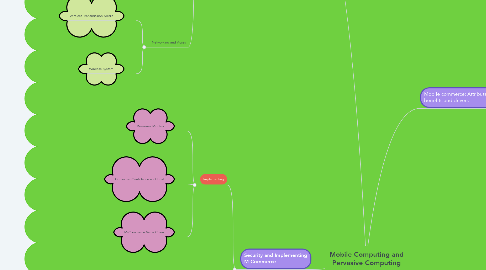
1. Mobile commerce: Attributes, benefits and drivers
1.1. Atributes
1.1.1. Accessibility
1.1.2. Instant Connectivity
1.1.3. Convenience
1.1.4. Ubiquity
1.1.5. Personalization
1.1.6. Time Sensitivity
1.1.7. Localization
1.1.8. Security
1.2. Drivers
1.2.1. Widespread availability of device
1.2.2. No need for PC
1.2.3. Handset culture
1.2.4. Vendors push
1.2.5. Improvement of Bandwidht
1.2.6. Explosion of EC in General
2. Mobile commerce applications
2.1. Mobile Purchase
2.2. Mobile Banking
2.3. Mobile Ticketing
2.4. Content purchase and delivery
2.5. Location-based services
2.6. Mobile marketing and advertising
3. Mobile commerce: Components, infrastructure and services
3.1. Infrastructure
3.1.1. Hardware
3.1.1.1. Cellular phones
3.1.1.2. PDAs
3.1.1.3. Smartpads
3.1.2. Software
3.1.2.1. Bluetooth
3.1.2.2. Microbrowser
3.1.2.3. Wireless Middleware
3.1.3. Networking and Acces
3.1.3.1. Wireless Transmission Media
3.1.3.2. Wireless System
4. Security and Implementing M-Commerce
4.1. Implementing
4.1.1. Revenues Models
4.1.2. Consumer Confidence and Trust
4.1.3. M-Commerce Value Chain
4.2. Security Issues
4.2.1. Viruses
4.2.2. Smart Card Security Solution
4.2.3. Back-end Security Solutions
5. Location commerce technologies and applications
5.1. L-Commerce Technologies
5.1.1. Global positioning systems
5.1.2. Geographical information systems (GIS)
5.1.3. GPS on handsets
5.2. Applications
5.2.1. E-911
5.2.2. Automatic Crash Notification
5.3. Barriers
5.3.1. M-spam
5.3.2. Cost benefit Justification
5.3.3. Bandwidth of GSM Network

